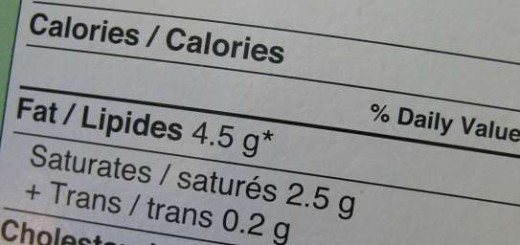A Beginner’s Guide To Flaxseed
You’ve no doubt heard of flaxseed. In recent years it’s found it’s way in to all kinds of foods; crackers, breads, frozen waffles, oatmeal and more. The Flax Council estimated about 300 was added or used in about 300 new products launched in the U.S. and Canada in 2010… and that’s not counting it’s use as chicken feed to boost the omega-3 fatty acid content of the eggs they lay.

The cultivation/harvest of flaxseed is said to date back thousands of years BC. The ancient Greeks and Romans were fans of flaxseed and early on realized it’s health benefits, but after the fall of the Roman Empire it sort of fell by the wayside. It’s popularity was revived by King Charlemagne believed so strongly in the health benefits of flaxseed that he passed laws requiring his subjects to consume it and it came to the New World primarily by way of Canada, who continues to be one of the largest flax producers.
Flaxseeds come in two variety, the darker brown or lighter yellow/golden variety. They taste about the same and can be used interchangeably and share pretty much the same nutritional make up. When buying flaxseed you can get it whole or already ground, and it must be ground in order to be able to digest it. If you purchase it pre-ground, make sure it’s either in a vacuum sealed bag or refrigerated as once it is ground the oils can go rancid rather quickly at room temperature. No matter which you buy, it’s a not a bad idea to go ahead and store it in the fridge, doing so will greatly increase it’s shelf life.
Nutritional Value
Nutritionally, flaxseed is being given credit for or being looked at as giving a variety of benefits including; being an anti-inflammatory, reducing blood pressure, reducing cholesterol, slowing/stopping prostate cancer growth, protecting bone health, protecting against cancer, diabetes, and heart disease, helping with hot flashes and reducing the symptoms of dry eye syndrome.
Whew. How does a little seed do all that? Aside from a host of micro-nutrients found in flaxseed, it’s basically it’s a combination of three things you find in abundance in flaxseeds:
- Omega-3 essential fatty acids, “good” fats that have been shown to have heart-healthy effects. Each tablespoon of ground flaxseed contains about 1.8 grams of plant omega-3s.
- Lignans, which have both plant estrogen and antioxidant qualities. Flaxseed contains 75-800 times more lignans than other plant foods.
- Fiber, both the soluble and insoluble types.
Using Flaxseed
Aside from buying products already with flaxseed in them (and always beware of hype over substance!), sprinkle your flaxseeds on yogurt, oatmeal, salads, or even your vegetables. They’ll add a bit of a nutty flavor. Mix them in smoothies for a nice fiber boost. Mix in to homemade breads, muffins, and cakes. You can even use flaxseed as a binding substitute for eggs in baking - either because you’re running short or you’re trying to make a vegan recipe. Just mix 1 Tablespoon flaxseed with 2 Tablespoons warm water for each egg you need and let sit about 20-30 minutes until the water thickens. If you don’t want the texture and flavor of the flaxseeds in your final product, here’s a suggestion for taking care of that.
I buy mine whole and grind it either as I need it or a small amount at a time to get me through the next week or so. They are easily ground in a coffee/spice grinder, a personal blender (i.e. Magic Bullet) or small food processor. By grinding your own you also have control over the “crunch” you get from them. When adding as a topping to yogurt, oatmeal or salads you may want a bit more of a crunch. When adding to some baked dishes you can grind them to a finer, smoother texture. I’ve also used coarse ground flaxseed as a substitute for bread crumbs when topping “gratin” type dishes.
A Word of Caution
Because of the large amount of fiber in flaxseed, some folks can get bowel irritation or even obstruction if they eat too much flaxseed too quickly. It’s not a bad idea to slowly incorporate flaxseed in to your diet and make sure you are drinking enough water. Additionally, flaxseeds contain cyanogenic glycosides which is a neurotoxin. However studies suggest that for those consuming “normal levels” (about 2 tablespoons a day) of flaxseed and you’re not suffering from protein malnutrition you should be just fine. Heat has been shown to break down these compounds as well.
Whole Seed vs. Oil
Flaxseed oil can be bought and used in a variety of ways as a supplement and cooking ingredient, but it’s expensive and very perishable. Additionally, while it has the benefits of being high in Omega-3, it doesn’t have the lingans you get with the whole seeds. I think you are much better off sticking to using the whole flaxseed in your foods rather than the oil.
Did You Know?
- Flax, the plant flaxseeds come from is also grown for it’s fibers as well as it’s oil and has been used to make fabric, dye, paper, medicines, fishing nets, hair gels, and soap. It’s also grown as an ornamental plant.
- Flaxseed oil is also known linseed oil, one of the oldest known commercially produced oils and is often used for drying oil paintings and as a wood varnish.
sources: Clean Eating - Whole Foods - Wikipedia














I am searching for cold milled, organic, COARSELY GROUND flaxseed on line (without success). Can you help?
Honestly, I don’t buy ground flaxseed when I can help it. Because it can go rancid so fast, I try to only buy whole and use my blender to “grind” what I need, as needed. And honestly when I see ground, I never see any distinction in how ground it is.
I am searching for eggles ( vegetarian )